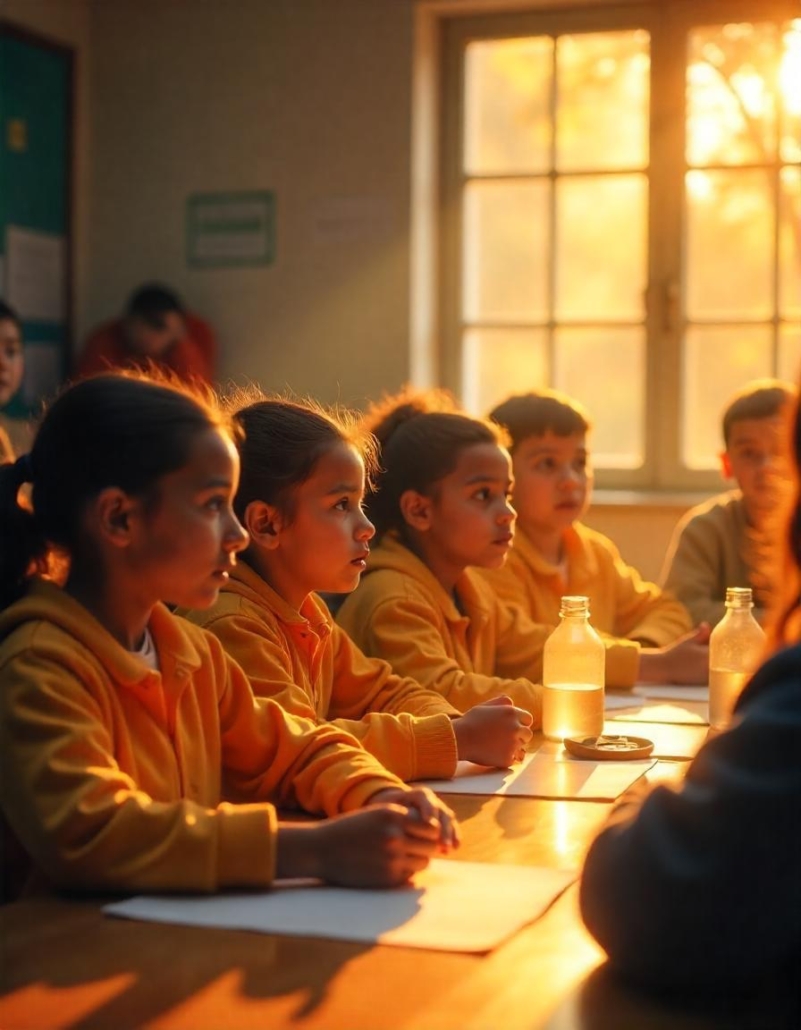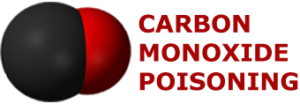Questionable Carbon Monoxide Response in Connecticut School Case
Questionable carbon monoxide response in Thompson Connecticut Middle School CO exposure incident. Abnormal COHb levels equal CO in indoor air. Twelve people don’t have abnormal blood carbon monoxide levels without a ambient air exposure.
By Rebecca Martin
There is probably nothing as important as the safety of our children. Most Americans trust that when we send our children off to school in the morning that those whom we have entrusted with their care share the same sentiment. But what happened in Thompson, Connecticut this week raises questions about whether public image has toppled the main objective of child safety.

Questionable official carbon monoxide response in Connecticut middle school evacuation leaves most important question unanswered: how did 12 children get CO in their blood if their was no poison in the air?
When emergency crews were called to Thompson Public Schools last Thursday in response to several children who were reporting symptoms of nausea and “not feeling well”, a sequence of questionable events unfolded that brings up serious concerns.
Initially, response went according to procedure. The school was evacuated, and parents were notified. Some parents opted to take their children home for the day. However, most students returned to the school after an evacuation lasting one and a half hours. However, while this was occurring, several students were evaluated by medical personnel and ultimately, 12 students were transported to the hospital for further evaluation.
The Brain Injury Law Group has represented more than 50 survivors in school poisoning cases.
The first explanation offered by the Thompson Schools Superintendent, Melinda Smith. was that an exhaust fan and ventilation unit had failed and that they were being repaired. It was further announced that the fire department had determined the area to be safe. The building inspector had determined there was no problem with the heating system. And testing of the area had not revealed any carbon monoxide.
However, medical findings at the hospital revealed that carbon monoxide levels were elevated in the children who were evaluated. The levels were determined to not be concerningly high at that point. There was no attempt to determine what the level might have been at the time of exposure. Children were eva luated after being evacuated from the area in questions, after receiving medical treatment on the scene and after most likely, receiving oxygen on the way to the emergency room. Even more concerning is that the student population at the school was returned within an hour and a half of suspected exposure.
luated after being evacuated from the area in questions, after receiving medical treatment on the scene and after most likely, receiving oxygen on the way to the emergency room. Even more concerning is that the student population at the school was returned within an hour and a half of suspected exposure.
“School and town leaders insist the air is safe and that there is no carbon monoxide.” https://www.wifr.com/2025/03/04/12-taken-hospital-after-feeling-nauseous-middle-school-district-searches-cause/
The air may be safe but evidently it wasn’t safe on Thursday morning because 12 students found themselves in the Emergency Room complaining of headache, dizziness, chest pains and difficulty breathing, all symptoms of carbon monoxide poisoning which would indicate that the air was not safe. And that carbon monoxide exposure could leave these students with long term and even permanent damages due to carbon monoxide exposure. Announcing that the air is safe, following repairs, and inspection, and the addition of more carbon monoxide detectors, and follow up by fire inspections, does nothing to address the fact that students almost had to have been exposed to carbon monoxide. Medical confirmation in 12 children leave little other explanation.
There are questions that should be addressed. Why was an exhaust fan and ventilation system allowed to fail? Why was the failure not detected? Why would the building inspector be called in to examine the furnace if carbon monoxide poisoning was not suspected at the scene? And why were children returned to the environment without a thorough inspection of the scene in light of the fact that a dozen children were transported to the hospital?
Too Many School Carbon Monoxide Responses
In 2021, a school in northwestern Wisconsin was evacuated due to what was believed at the time to be exposure to a chemical odor originating from some sewer pipes that were being recoated in the area. The school was aired out and deemed safe for the return of the students. Parents were assured that one time exposure to the chemical did not “constitute a risk for long-term health effects”. Yet 24 students and 20 staff members received medical treatment at the scene with two students being transported to medical facilities for evaluation. It was determined that 64 students and staff were ultimately impacted by the exposure.
The school refused to release environmental testing results even though carbon monoxide poisoning was discovered, not only in the students who had been medically transported, but in several of those who had been treated at the scene, according to the Fire District Chief, Darren Vik. “Obviously, there was a carbon monoxide problem because the students had some carbon monoxide in their systems,” Vik said. “They were low amounts, but they still had some. So, then the question is, well, where did that come from?” https://www.apg-wi.com/spooner_advocate/free/spooner-area-school-district-says-it-wont-release-environmental-testing-results-yet-that-relate-to/article_09389096-5dbf-11ec-aeb3-c7e9c8d8cef4.html
If the Source Hasn’t Been Found, How can it be Ruled Safe?
Although the supposed chemical exposure was deemed to be toxic, the question remained. Where did the carbon monoxide come from?
Environmental Protection Agency webpage titled “Volatile Organic Compounds’ Impact on Indoor Air Quality” states that “methylene chloride can be converted into carbon monoxide in the body and cause symptoms associated with exposure to carbon monoxide.” https://www.apg-wi.com/spooner_advocate/free/spooner-area-school-district-says-it-wont-release-environmental-testing-results-yet-that-relate-to/article_09389096-5dbf-11ec-aeb3-c7e9c8d8cef4.html
A month later, parents had still not received any explanation of what had occurred, only a notice that the school was reopening, and the environment had been deemed safe. All attempts to receive detailed information and test results were unsuccessful. The exposure victims were left without any insight into what had happened or what problems could persist as a result. And yet parents, in blind faith, were expected to trust that the school was operating on the premise that the welfare of the students was its prime concern.
School Must be Safe from Carbon Monoxide
The theme in these two situations seems to be school authorities producing the sort of statements one might expect from a vacation resort, intent on preserving its public image. “People got hurt, we did nothing wrong, if we did something wrong it’s fixed now, move on.” Yet we should know by now, carbon monoxide is an insidious poison that leaves its mark and then re-emerges in 40% of the cases of exposure. We know that children are more susceptible than adults to carbon monoxide poisoning. It is impossible to make a statement that denies the possibility of long-term health problems from the initial exposure and simply state “the air is safe now.”
In both cases we had classic indications of carbon monoxide exposure. Multiple students fell ill to common carbon monoxide symptoms. Evacuations ensued. Medical evaluation revealed abnormal levels of carbon monoxide. Yet, in both cases officials stuck to the “People got hurt, we did nothing wrong, if we did something wrong it’s fixed now, move on.” mentality. We must wonder what this does for the peace of mind of parents who are entrusting their children to these people for care. There is a serious disconnect.

Leave a Reply
Want to join the discussion?Feel free to contribute!